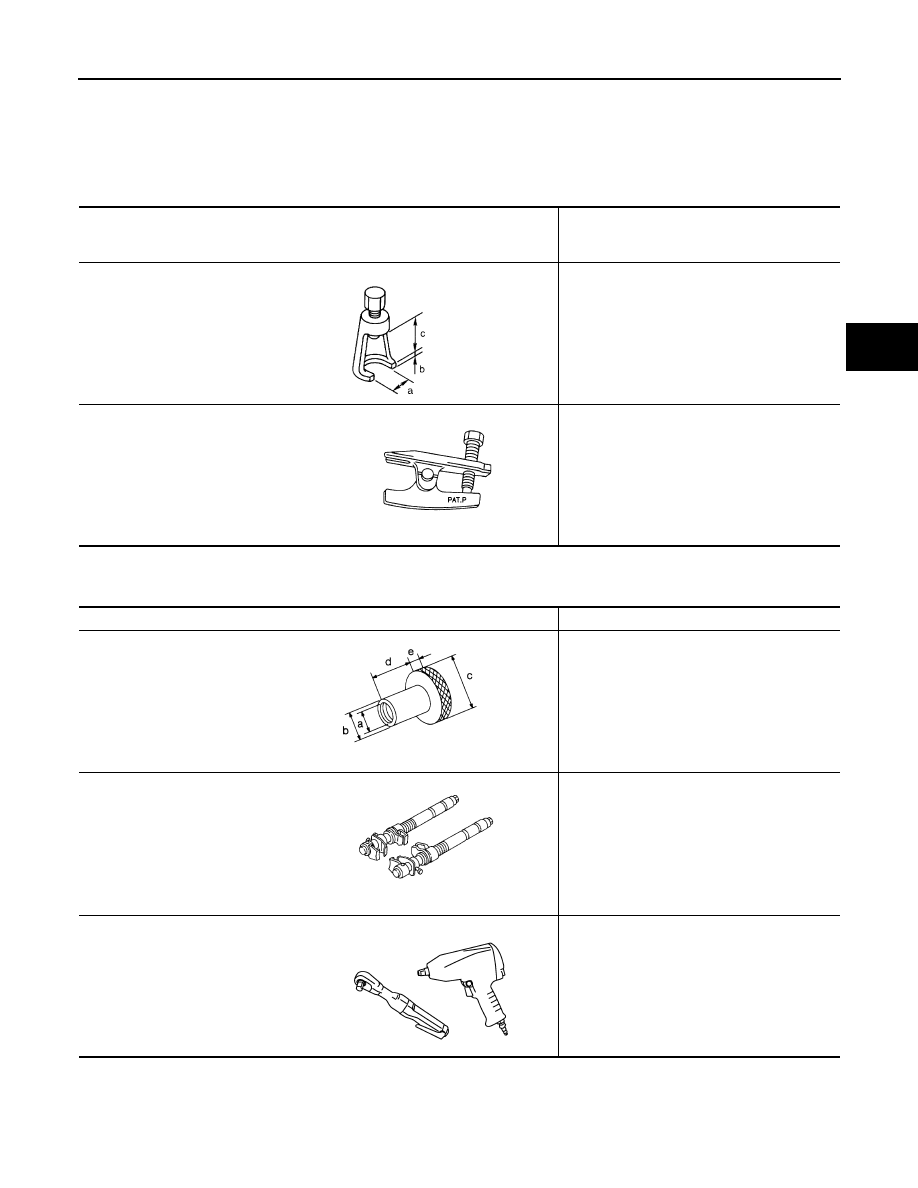Nissan Frontier D40. Manual - part 686

PREPARATION
FSU-3
< PREPARATION >
C
D
F
G
H
I
J
K
L
M
A
B
FSU
N
O
P
PREPARATION
PREPARATION
Special Service Tool
INFOID:0000000005275015
The actual shapes of Kent-Moore tools may differ from those of special service tools illustrated here.
Commercial Service Tool
INFOID:0000000005275016
Tool number
(Kent-Moore No.)
Tool name
Description
ST29020001
(J-24319-01)
Gear arm puller
Removing ball joint for knuckle
a: 34 mm (1.34 in)
b: 6.5 mm (0.256 in)
c: 61.5 mm (2.421 in)
HT72520000
(J-25730-A)
Ball joint remover
Removing tie-rod outer end
NT694
NT146
Tool name
Description
Attachment wheel alignment
Measuring wheel alignment
a: Screw M24 x 1.5 pitch
b: 35 mm (1.38 in) dia.
c: 65 mm (2.56 in) dia.
d: 56 mm (2.20 in)
e: 12 mm (0.47 in)
Spring compressor
Removing and installing coil spring
Power tool
Loosening bolts and nuts
NT148
NT717
PBIC0190E